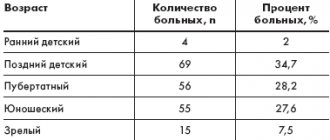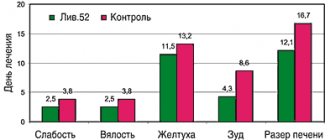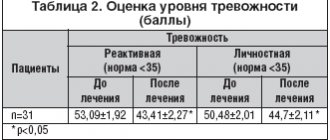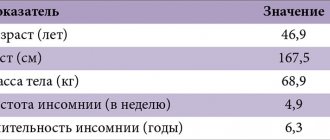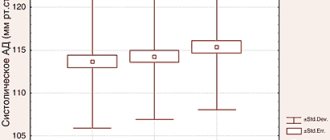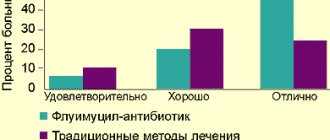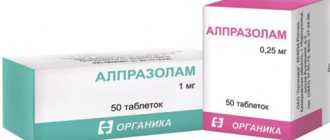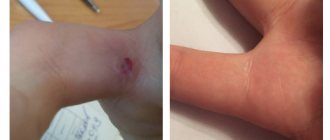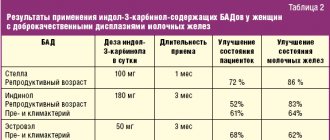Small concentrations of nitrous oxide cause a feeling of intoxication (hence the name “laughing gas”) and slight drowsiness. Nitrous oxide does not cause respiratory irritation. Nitrous oxide dissolved in blood plasma practically does not change, is not metabolized and does not bind to hemoglobin. After inhalation ceases, it is excreted (within 10-15 minutes) through the respiratory tract unchanged.
Inhalation of nitrous oxide with oxygen occurs using a comfortable mask, a pleasant aroma and a feeling of relaxation are felt. This procedure is completely safe, since nitrous oxide does not cause side effects or addiction, allergic reactions, is quickly and easily removed from the body, and has no aftereffects. This technology is used in both pediatric and adult dentistry. Nitrous oxide has been used in countries with progressive dentistry for more than 30 years. In the USA, Israel, and Great Britain, almost 100% of pediatric dental clinics use this technique on a daily basis. Therefore, it cannot be called new, but rather proven.
Pharmacological properties
Pharmacodynamics
Dinitrogen oxide is a means for inhalation anesthesia. The mechanism of action is due to the ability to interact nonspecifically with neuronal membranes, inhibit the transmission of nerve impulses in the central nervous system, and change cortical-subcortical relationships.
Characterized by high analgesic activity. In small concentrations it causes mild drowsiness and a feeling of intoxication.
The analgesia stage is reached 2–3 minutes after inhalation of a gas mixture containing up to 80% nitrous oxide and 20% oxygen. 6–8 minutes after a short-term but quite pronounced stage of excitation, stage I of surgical anesthesia begins.
To maintain anesthesia, a dinitrogen oxide concentration of 40–50% with a corresponding increase in oxygen concentration is sufficient. In this case, sufficient relaxation of the skeletal muscles is not achieved. In this regard, to achieve the required effect, nitrous oxide is used in combination with other agents intended for inhalation anesthesia and muscle relaxants.
Awakening occurs 3–5 minutes after stopping the supply of the inhalation gas mixture.
Nitrous oxide depresses respiration, causes peripheral vasoconstriction, increases heart rate, and can increase intracranial pressure.
Pharmacokinetics
Through the lungs, nitrous oxide enters the systemic bloodstream. In plasma it is in a dissolved state and is not metabolized. It is excreted primarily through the lungs unchanged (after 10–15 minutes), in small quantities through the skin.
The half-life is 5–6 minutes.
Penetrates well through the blood-brain and placental barriers.
hangover cure
In the basement of the Pneumatic Institute, the young chemist Humphry Davy observed the Watt-Beddows machine and at the same time tried on himself the different gas mixtures that the machine produced (we talked about another valuable observation made by Davy in the material “Chrysopoeia of Water”). In 1800, in his book Researches, Chemical and Philosophical, Davy described the extraordinary effect of one of the gases - nitrous oxide, which he was able to isolate in its pure form: it helped him cope with a hangover. “After the third inhalation, I did not feel a headache, a pleasant excitement arose, my willpower was weakened, bright ideas quickly flashed through my mind; I walked around the room and was very excited for several minutes.”
The idea to relieve a hangover with nitrous oxide came to the chemist for a reason - he had already breathed this gas before. At the same time, he wrote, “increased muscle activity was accompanied by very pleasant sensations. <…> I laughed, staggered and tried to speak, but I couldn’t utter a word.”
Davy called nitrous oxide “laughing gas” - and this name, and at the same time the substance itself, quickly became popular among the people. Beddoes was still figuring out whether nitrous oxide helped against tuberculosis - and British nobles had already begun to hold social events where bags of laughing gas were served instead of wine and delicacies. According to contemporaries, at these parties some “ran up and down the stairs and throughout the house, saying strange things,” others “lost the feeling of their own weight,” and still others “felt like the sound of a harp.” There were also those who described the sensation as “returning from a walk in the snow to a warm room.”
In general, the entertainment that British aristocrats became addicted to in 1799 would be called either recreational drug use or substance abuse by modern people, depending on the context.
Life Made Easier: A Cure for Quarrelsome Wives is an 1830 satirical engraving of Humphry Davy administering a dose of laughing gas to a woman.
CC0
Share
No one at that time could explain exactly how nitrous oxide “has fun.” Moreover, even now this is not completely clear. Experiments on rats showed that it blocks NMDA receptors, which causes dopamine to be released in the areas of the brain responsible for pleasure. From a neurophysiological point of view, these processes should indeed be responsible for feelings of joy and positive emotions. But no one has yet experimentally confirmed this in humans. Davy and his followers did not know that the fun caused by the gas did not pass without a trace for them. Any substance that produces a feeling of pleasure can be addictive—nitrous oxide is no exception. The release of dopamine, which brings laughter and good mood, is associated with the formation of psychological addiction if it is released in certain areas of the brain. The fact that those addicted to laughing gas do not face full-blown chemical dependence has not been proven by anyone for three centuries. Although no one has provided clinical examples of chemical addiction to N2O. There are some considerations that the gas does not act strongly enough on dopaminergic pathways and neurons do not lose sensitivity from its influence: this, in theory, should abolish the withdrawal syndrome. But all this does not prevent nitrous oxide, so cheap, accessible and easy to use, from ruining addicted consumers.
Indications for use
According to the instructions for use, nitrous oxide is used in the following cases:
- Inhalation combined anesthesia in combination with narcotic analgesics and muscle relaxants, carried out using special equipment;
- General anesthesia in operative gynecology, general surgery, dentistry and for pain relief during childbirth, which does not require muscle relaxation and deep anesthesia;
- Prevention of traumatic shock, as well as to enhance the analgesic and anesthetic effects of other drugs, including therapeutic analgesic anesthesia after surgery;
- Relief of pain in acute pancreatitis, myocardial infarction, acute coronary insufficiency;
- Switching off consciousness for pain relief during medical procedures.
Preparing for anesthesia
When the patient is prepared for nitrous oxide inhalation, he is given a sedative. Recently, anesthesia is increasingly combined with drugs such as fluorotane and cyclopropane. Thanks to this, it is possible to achieve the required depth of anesthesia to perform a major surgical operation. However, these drugs may not be used for every organism. They have a number of contraindications that must be taken into account by the doctor.
Before inhalation anesthesia, you must adhere to a fasting diet and also take the pills given by the doctor. Basically, the patient is prescribed sedatives that relieve stress before surgery and reduce tension levels.
Contraindications
- Pathologies of the nervous system;
- Hypoxia;
- Chronic alcoholism or state of alcohol intoxication;
- Breastfeeding period;
- Hypersensitivity to the drug.
The drug should be used with caution in patients with traumatic brain injury, intracranial tumor, or a history of increased intracranial pressure.
If it is necessary to use it during pregnancy, the drug is prescribed in small concentrations (in a 1:1 ratio to oxygen) for a short time (within 2-3 breaths).
Disadvantages of use in children
Among the disadvantages of this procedure, the following side effects can be noted:
- Some children may have a headache or dizziness.
- The smell of gas may not be pleasant to the baby and may even cause a gag reflex.
- Nitrous oxide should not be used during a runny nose or any other respiratory disease.
- The sedation procedure is quite expensive.
- There are times when a child, on the contrary, becomes too active and excited during inhalation. This phenomenon is considered an exception, but is nevertheless possible.
- Nitrous oxide does not eliminate the need for an additional anesthetic.
Nitrous oxide, instructions for use: method and dosage
Nitrous oxide is used in the form of inhalation in combination with oxygen and other anesthetics using special equipment for gas anesthesia in hospital settings.
Typically, anesthesia begins with a mixture containing 70-80% dinitrogen oxide and 20-30% oxygen.
Recommended concentration of dinitrogen oxide:
- Therapeutic anesthesia for the relief and prevention of pain: 40-75%;
- General anesthesia: dose for rapid immersion to the required depth of anesthesia - 70-75%, maintenance dose - 40-50%. If necessary, powerful narcotic drugs can be added to the mixture, including fluorotane, barbiturates, and ether. After turning off the supply of dinitrogen oxide, it is recommended to continue the oxygen supply for another 4-5 minutes in order to prevent diffusion hypoxia;
- Pain relief during labor: 40-75%, using the method of intermittent autoanalgesia, in which the woman in labor begins inhaling the mixture when warning signs of contraction appear and stops at its peak or towards the end of the contraction;
- Blackout for medical procedures: 25-50%.
The concentration of nitrous oxide for children is selected individually, and the oxygen content in the mixture should be 30% or more. After completion of anesthesia, it is necessary to continue inhalation oxygen supply for 5 minutes to prevent hypoxia.
Inhalation anesthesia is carried out against the background of premedication. In order to prevent nausea and vomiting, to reduce emotional arousal and enhance the effect, intramuscular administration of 2-3 ml of a 0.25% solution of droperidol (5-7.5 mg), 1-2 ml of a 0.5% solution of diazepam (5-10 mg).
A sip of well-being
While legislators are shutting off the air to laughing gas dealers, doctors are looking for worthy uses for it. When it became clear that it would not work either as an antibiotic or as an anesthetic, a new idea appeared - to use laughing gas for mental disorders. Back in the first half of the 20th century, doctors tested it on patients with schizophrenia and noticed that it seemed to alleviate its symptoms - although, apparently, it further aggravated the severity of the disease.
How exactly nitrous oxide could help a damaged brain was not clear at the time. Some psychiatrists, for example, believed that oxygen deprivation could be useful for mental disorders. To do this, the patient had to inhale a mixture of gases, in which the proportion of air could reach only 45 percent, or even zero. Such mixtures often used carbon dioxide and, of course, nitrous oxide. And despite the fact that no one tested the effects of the gas itself separately (it was used exclusively for asphyxiating effects), in some studies psychiatrists reported that their patients reported “vivid dreams,” although they could not remember them, and a feeling “ well-being” (but not euphoria), which lasted several hours after the procedure.
Side effects
The use of Nitrous Oxide can cause side effects in the form of bradycardia, supraventricular arrhythmias, circulatory failure - during the period of introducing the patient into a state of general anesthesia.
Undesirable effects after recovery from anesthesia may include: drowsiness, nausea, vomiting, diffuse hypoxia, confusion, anxiety, agitation, nervousness, hallucinations, motor agitation. Long-term use (2 or more days) can lead to respiratory depression, impaired bone marrow function (leukopenia, pancytopenia), cause postoperative chills and hyperthermic crisis.
Disadvantages of this type of inhalation
Even this gentle inhalation method has its drawbacks. These include the following:
- It is impossible to put the patient into a state of deep anesthesia. This method does not allow for major surgery.
- If a large dose is administered, the level of oxygen saturation in the blood will decrease. This can cause hypoxia.
- The contractile activity of the myocardium will decrease slightly, but will decrease.
- If during the operation the patient feels severe pain, he may twitch sharply, thereby complicating the doctor’s work.
- Large doses may contribute to depression of brain activity.
Overdose
An overdose of Nitrous Oxide can be manifested by the following symptoms: respiratory depression, acute hypoxia, decreased blood pressure, arrhythmia, bradycardia, delirium.
Treatment:
- bradycardia: administration of atropine at a dose of 0.3–0.6 mg;
- arrhythmia: correction of gas levels in the blood;
- circulatory failure, arterial hypotension: reduction in the depth or cessation of general anesthesia, administration of plasma or plasma substitutes;
- hypertensive crisis: cessation of inhalation, increased oxygen supply, correction of metabolic acidosis and water-salt balance disorders, administration of antipyretics. If necessary, dantrolene is administered intravenously at a dose of 1 mg/kg (the total dose should not exceed 10 mg/kg) until the symptoms of the crisis stop. To avoid a relapse of the crisis, dantrolene is used for 1–3 days after surgery (orally or intravenously at a daily dose of 4–8 mg/kg in 4 divided doses);
- respiratory depression or inadequate postoperative ventilation: reducing the dose of anesthetic (if still used), maintaining the airway or artificial ventilation;
- delirium after recovery from general anesthesia: administration of a narcotic analgesic in small doses.
Medical Internet conferences
In 2001, a group of Saratov authors first proposed the use of millimeter-wave electromagnetic vibrations with frequencies corresponding to the rotational molecular spectra of the most important cellular metabolites (NO, CO, O2, CO2, OH, etc.) [1]. Since the molecular emission and absorption spectra of cellular metabolites are in the short-wave part of the submillimeter (terahertz) range [2], which is located on the scale of electromagnetic waves between the EHF and optical infrared ranges [3], the new direction is called “terahertz therapy” (THT therapy) [4].
It is known that metabolite molecules are the fundamental basis for the functioning of complex biological systems, so the possibility of controlling their reactivity, which can be used to regulate metabolic processes, is of extremely great interest.
To implement new scientific tasks, a panoramic spectrometric measuring complex with a quasi-optical reflectometer operating in the frequency range 118-600 GHz was created at JSC TsNIIIIA (Saratov) [1], since it is this range that includes the resonant absorption and emission spectra of the molecules of the above-mentioned cellular metabolites [2], including the molecular spectrum of emission and absorption of nitric oxide (150.176...150.644 GHz).
The molecular emission and absorption spectrum of nitric oxide (NO) attracted the attention of researchers first of all, since for more than 20 years the problem of nitric oxide has been one of the key ones in modern biology and medicine.
In 1987, the reaction of NO formation inside the cells of a macroorganism was discovered [5], after which methods for accelerating and slowing down this reaction, the interaction of NO with the nervous, endocrine and immune systems of the body, and the cytotoxicity of NO towards the macroorganism and microbes began to be intensively studied. The discovery of intracellular NO synthesis led to the discovery of a previously unknown regulatory system of the human and mammalian body – the nitric oxide system [5]. A new direction has emerged in biology—NO biology [6], which provides new fundamental information that can be used in medicine. A number of authors believe that the analysis of cyclic transformations of NO will be no less fruitful for physicians and biologists of the 21st century than the study of the tricarboxylic acid cycle in the mid-20th century [7].
In 1998, three American scientists - R. Furchgott, Luis J. Ignarro and F. Murad - were awarded the Nobel Prize in Physiology or Medicine for their discovery of the role of “nitric oxide” as a signaling molecule in the cardiovascular system" [8]. The nitric oxide molecule is called the “molecule of the 20th century” [7]. NO is not only a universal regulator of physiological and metabolic processes in an individual cell and in the body as a whole, but also carries out intercellular interactions, functioning as a signaling molecule in almost all organs and tissues of humans and animals [9-11]. A characteristic feature of NO is its ability to quickly diffuse through the membrane of the cell that synthesized it into the intercellular space and also easily (without the need for receptors) to penetrate target cells, which determines the properties of NO as a neurotransmitter [12, 13]. It was thanks to the study of nitric oxide that a new principle of signal transmission in biological systems was established: NO is formed in some cells, penetrates membranes and regulates the functions of other cells [7]. Endogenous NO is involved in many vital physiological processes. It is a universal modulator of various body functions, such as interneuronal communications, synaptic plasticity, the state of receptors, intracellular signal transmission, and the release of other neurotransmitters [13].
Inside the cell, NO activates some enzymes and inhibits others. The main physiological targets for NO are considered to be soluble guanylate cyclase and ADP-ribbosyltransferase [7, 14]. Activation of soluble guanylate cyclase causes an increase in cGMP, which in turn leads to a decrease in intracellular Ca2+ content [7]. According to many authors, the ability to regulate the intracellular concentration of Ca 2+ ions is one of the most important properties of NO [15].
Endogenous nitric oxide exists and is continuously synthesized in organs, tissues and cells enzymatically with the participation of NO synthases (NOS) - enzymes that use the amino acid L-arginine as the only substrate [6].
Three isoforms of NOS have been studied: endothelial, neuronal and macrophage [1,16]. Endothelial NOS is found in vascular endothelial cells, platelets, myocardium and endocardium. The endothelial mechanism for the formation of NO from L-arginine is activated during blood flow disturbances and under the influence of acetylcholine, bradykinin, histamine and platelet aggregation factor [1, 8, 16]. Neuronal NOS is found in neurocytes of the central nervous system and peripheral plexuses of the autonomic nervous system (ANS). There are nitrergic (nitrinergic) synapses in the CNS and ANS [1, 8]. Their mediator is NO. NO spreads along the efferent nitrergic nerves to the organs of the respiratory system, gastrointestinal tract, genitourinary system, and uterus [5, 16].
Neuronal and endothelial NOS have many common properties; they are combined together and called constitutive NOS [5, 16]. Constitutive NOS is calcium dependent because it requires Ca2+ for its activation. The enzyme synthesizes NO in physiological concentrations necessary to maintain body homeostasis; the steady-state level of NO maintained by constitutive NOS in tissues does not exceed several micromoles [16]. The formation of NO occurs in a discrete mode and in small portions, and only during those periods of time when the calcium concentration in the NO-synthesizing cell increases [5]. The hypothalamus–pituitary–adrenal cortex system does not have any inhibitory effect on constitutive NOS [5]. Constitutive NOS acts as an antagonist of the adrenergic nervous system in the regulation of blood pressure. Congenital or acquired deficiency of constitutive NOS leads to arterial hypertension, and its hyperfunction leads to hypotension.
In addition to constitutive NOS, “inducible” or “calcium-independent” NOS is also distinguished. It is found in macrophages (therefore it is also called “macrophage”), hepatocytes, fibroblasts, smooth muscle cells of blood vessels, the gastrointestinal tract and genitourinary system, muscle cells of the heart and uterus [5, 16-18]. Inducible NOS appears in cells only after their induction by bacterial toxins and certain inflammatory mediators, for example, proinflammatory cytokines [5, 16, 17]. In cells that are at rest, it is not detected. Inducible NOS synthesizes NO continuously, regardless of the calcium content in NO-synthesizing cells and in quantities hundreds of thousands of times higher than the NO concentrations produced by constitutive NOS [16]. Produced by inducible NOS NO is primarily intended to protect the host organism, helps reduce the activity of border inflammatory cells, the death of microorganisms and intracellular parasites, inhibiting platelet aggregation and improving local blood circulation [12].
The hypothalamus–pituitary–adrenal cortex system can prevent the activation of not yet activated inducible NOS, but cannot stop the secretion of NO that began under the influence of already activated inducible NOS [5]. It has been indirectly calculated that the rate of NO synthesis in a macroorganism can change millions of times [5].
Under hypoxic conditions, the stability of NO increases, which enhances its biological effect [7].
NO production can slow down or stop under the influence of ethanol, glucocorticosteroids, and indomethacin [7, 19].
NO is inactivated by blood hemoglobin with the formation of nitrosohemoglobin, which breaks down to methemoglobin [5]. Excess NO can bind when it interacts with superoxide radicals, thiols and metals (especially Fe2+) [20].
Nitric oxide has also been described as having undesirable effects. According to modern concepts, they are caused by the formation of the strongest oxidizing agent - peroxynitrite, which arises in the reaction of NO with the superoxide anion. Peroxynitrite acts as an integral link that unites two systems of active low-molecular agents that arise in cells and tissues - NO and reactive oxygen species [16].
High concentrations of NO have a cytotoxic or cytostatic effect on any cell, without differentiating whether it is a normal host cell, a tumor cell or a macrophage [5, 7]. The half-life of the NO molecule is measured in seconds, so its effect extends only to nearby cells [5]. It has been established that a chronic excess of NO in the body leads to autoimmune diseases [5].
It has been indirectly calculated that the rate of NO synthesis in a macroorganism can vary millions of times. Sharp hyperproduction of NO is a frequent accompaniment of severe acute therapeutic, surgical and infectious diseases [5]. At the same time, NO itself, excessively accumulating in the cell, can cause DNA damage and have a pro-inflammatory effect in endotoxemia, septic shock, and inflammatory lung diseases [12].
It should be especially emphasized that nowadays people are increasingly talking about the multifunctionality of the action of NO, which sometimes has the opposite character. Thus, it became known that NO can both enhance lipid peroxidation processes in cell membranes and inhibit them, cause both vasodilation and vasoconstriction, induce apoptotic cell death and have a protective effect against apoptosis induced by other agents [7, 21] . NO is characterized by both anticarcinogenic activity and mutagenic action [19].
The conditions under which the protective effect of NO becomes damaging are not clear enough. The multiple effects of NO can be explained by the presence of a large number of metabolic products in the nitric oxide cycle (NO2-, NO3-, NO+, NO-, NO2.-radical, etc.), which have different biological effects [7].
It is believed that the different effects of NO are determined by a variety of NO signaling pathways (which depend on the relative rate of NO formation, redox reactions, as well as combinations of oxygen, superoxide radical and other biological molecules) and the sensitivity of cellular systems to one or another signaling pathway [21 ]. The final effect of NO in blood vessels may depend on the site of its generation, local concentration, and interaction with other tissue components [20].
The biological effects of NO are of particular interest to cardiologists, since NO is a neurotransmitter, a powerful factor of hemostasis, an antiplatelet agent, an endogenous vasodilator [14, 16, 22-27], has a stress-limiting effect [28], and is directly involved in the mechanisms of modulation of the immune response [ 18], is a universal regulator of the central and peripheral nervous systems [7, 13]. Nitrinergic synapses have been described in the central nervous system and the autonomic nervous system, as well as nitrinergic nerves in the heart, gastrointestinal tract, respiratory tract and genitourinary system [5, 12], which suggests the existence of a third (along with choline and noradrenergic) type of nervous system [12] .
Nitric oxide, produced in the brain, is one of the most important levers by which the nervous system controls vascular tone, and several mechanisms of such regulation have been described - through direct stimulation of vasopressin release or by modulating the relationship in the hypothalamus-epiphysis-adrenal system [7].
However, the main mechanism of the vasodilatory effect of NO is directly related to the functioning of guanylate cyclase, and only its soluble form, and is mediated through the activation of soluble guanylate cyclase with the accumulation of cyclic 3', 5'-guanosine monophosphate (cGMP), which subsequently leads to the release of Ca2+ from muscle cells and into ultimately – to vasodilation [17]. It has been proven that NO is involved in the relaxation of vascular smooth muscles [7, 29, 30-34].
Moreover, it has been established that many physiological vasodilators exert their vasodilatory effect precisely through the activation of NO synthesis. The therapeutic effect of the most well-known nitrovasodilators - nitroglycerin, nitrosorbide, sodium nitroprusside, etc. - is also associated with the interaction of NO, formed as a result of their biotransformation, with the heme of guanylate cyclase, activation of the enzyme and accumulation of cGMP.
The known property of nitric oxide to inhibit platelet aggregation is also associated with its ability to activate soluble guanylate cyclase [14, 29, 35, 36]. Guanylate cyclase regulates aggregation through a feedback mechanism: initiation of aggregation promotes activation of the enzyme, and accumulating cGMP mediates a signal for disaggregation and inhibits aggregation through the general mechanism of inhibition of Ca2+ accumulation. Thus, guanylate cyclase can be considered as a protective mechanism against the development of aggregation. In this regard, targeted activation of guanylate cyclase by nitric oxide and NO-generating compounds can be used to attenuate the increased ability of platelets to aggregate. And since the regulatory role of guanylate cyclase manifests itself at the very early stages of the aggregation process, new enzyme activators will be able not only to weaken hyperaggregation, but also to prevent their spontaneous aggregation, and therefore, prevent the occurrence and development of vascular complications.
The cytoprotective effect of NO is due to its ability to prevent not only aggregation, but also platelet adhesion [16, 19].
It is known that nitric oxide helps normalize the functional state of the cell wall, as well as the coagulation potential of the blood and microcirculation [17, 34, 37].
In addition, under the influence of nitric oxide, there is a decrease in the aggregation ability of erythrocytes both in vitro and in vivo [38], a change in the geometry of blood vessels due to their dilatation [23, 27, 39], that is, endogenous nitric oxide largely determines the rheological properties blood, which primarily depend on the qualitative and quantitative composition of red blood cells.
Of great importance is the discovered anti-stress effect of NO, which is associated with its activation of stress-limiting mechanisms [28]. It is known that this reduces the content of fibrinogen in the blood, which affects both platelet aggregation and the rheological properties of blood [40-42].
With prolonged stress exposure, a decrease in the production of endogenous nitric oxide and a decrease in its regulatory functions occur [28].
It has been established that nitric oxide takes part in the regulation of lipid peroxidation: in physiological concentrations, NO acts as an antioxidant that inhibits the development of radical oxidative reactions by binding to free Fe2+ ions and heme ions and inhibiting the decomposition of peroxides [7].
Thus, the nitric oxide regulatory system influences the main pathogenetic mechanisms of the development of cardiovascular pathology: platelet hemostasis, hemocoagulation, rheological properties of blood, the functional state of the endothelial and smooth muscle components of the vascular wall, stress-limiting factors, lipid peroxidation.
Diseases of the cardiovascular system can develop both as a result of a decrease and as a result of an uncontrolled increase in the concentration of NO in the body.
A decrease in NO secretion leads to the development of arterial hypertension and pathology of the coronary vessels. Thus, the results of experiments on experimental animals revealed the existence of a causal relationship between a decrease in NO secretion and the occurrence of arterial hypertension [43, 44].
The mechanism of this action is explained, firstly, by the fact that NO is (along with prostacyclin, etc.) an activator of guanylate cyclase [17] and causes relaxation of vascular smooth muscles. Secondly, NO has blood pressure and central depressive effects, probably through its effect on the paraventricular nuclei of the hypothalamus and the nucleus of the solitary tract [17, 45]. It has been established that increased concentrations of endogenous NOS blockers are one of the causes of renal hypertension [46].
Studies with NO donors and inhibitors have shown that their intracoronary administration has a direct effect on the tone of the coronary arteries in patients with atherosclerosis or hypercholesterolemia. Thus, in patients with atherosclerosis of the coronary arteries, intracoronary infusion of the NO inhibitor acetylcholine leads to a paradoxical reaction - a decrease in the diameter of the subendocardial arteries, while in healthy people a similar procedure causes their increase [47]. Experiments with the NO donor L-arginine showed that its intracoronary administration in patients with hypercholesterolemia significantly increased coronary blood flow, which confirms the role of NO in the regulation of coronary tone [48]. It was noted that dysfunction of the vascular endothelium appears to manifest itself long before the development of clinically significant atherosclerosis [48].
Due to its vasodilatory properties and ability to inhibit the generation of O2-phagocytic cells, NO plays a key protective role in ischemic myocardial damage [7].
It is also known that nitric oxide, released in the sinoatrial node, is required to participate in the autonomic control of the heartbeat [7]. NO may also be involved in vascular remodeling processes [20].
The role of NO in the regulation of vascular tone of the lungs under hypoxic conditions has been proven: acute blockade of NO synthesis led to increased hypoxic vasoconstriction [12]. Insufficient formation and release of NO is the predominant mechanism for the development of pulmonary hypertension and the loss of the ability of pulmonary vessels to respond by vasodilation to endothelium-dependent substances during chronic hypoxia [12]. In many cases, NO inhalation eliminates pulmonary vasoconstriction associated with hypoxia, primary pulmonary hypertension, cardiac defects, and adult respiratory distress syndrome [12].
An increase in NO concentration is one of the pathogenetic links of various types of shocks [5]. It has been proven that a progressive decrease in blood pressure in cases of prolonged infectious-toxic shock is due to increased secretion of nitric oxide as a result of the expression of inducible NOS under the influence of inflammatory stimuli [20, 49]. In this case, there is refractoriness even to large doses of vasoconstrictors, but it has been proven that immediately after intravenous administration of NO inhibitors, blood pressure in such patients increases [49]. A similar situation is observed in hemorrhagic shock [50].
The concentration of NO in the blood increases not only in shock, but also in many other diseases [11, 51]. Most of them are characterized by a tendency to hypotension and a decrease in the reserve of contractile function of the heart.
The negative inotropic effect of proinflammatory cytokines on isolated papillary muscle is mediated by NO, which is an effective cytokine molecule [52]. The development of circulatory failure during systemic inflammatory reactions is also associated with hyperproduction of NO in blood vessels under the influence of inflammatory stimuli [20].
Inducible NOS was found in cardiomyocytes of patients with dilated cardiomyopathy, which is not found in healthy cardiomyocytes [53]. Experimental studies revealed a negative chronotropic effect of NO on the myocardium [54]. An increased level of NO in the blood is apparently one of the causes of impaired contractile function of the heart in dilated cardiomyopathy, myocarditis and myocardial infarction [55, 56].
It is known that local vascular reactions caused by atherosclerosis and endothelial destruction also lead to hyperproduction of nitric oxide as a result of the expression of inducible NOS [20].
The presented data indicate that both deficiency and excess of nitric oxide contribute to the emergence of a wide variety of pathologies of the cardiovascular system.
A decrease in NO secretion leads to the development of arterial hypertension, pathology of the coronary vessels, progression of prethrombotic and thrombotic conditions, impaired microcirculation, and increased hypoxic vasoconstriction of the pulmonary vessels. Nitric oxide plays a key protective role in ischemic myocardial damage, takes part in the pathogenesis of ischemic cerebral infarction, vascular remodeling processes, activation of stress-limiting factors, and in the mechanisms of modulation of the immune response.
An excessive increase in the concentration of NO in the blood leads to hypotension and a decrease in the reserve of contractile function of the heart, and is one of the pathogenetic links of various types of shocks.
Thus, for cardiologists, the issues of maintaining the physiological level of concentration and functional state of endogenous NO in the human body seem extremely relevant both scientifically and practically.
Of particular importance is the fact that the efficiency of the nitric oxide cycle increases sharply under functional loads associated with increased oxygen utilization, during cerebral and myocardial ischemia, and during numerous pathological processes occurring under hypoxic conditions. Only in cases where the use of oxygen is fully compensated by its supply can the role of the nitric oxide cycle remain the same as it performs under normal physiological conditions [57]. Consequently, the role of the nitric oxide cycle increases sharply in diseases such as coronary heart and brain disease, arterial hypertension, congenital and acquired heart defects, and myocardial dystrophy.
Currently, intensive searches are underway for methods to create pharmacological activators of guanylate cyclase based on chemical structures (donors) that provide the possibility of the formation of endogenous nitric oxide in the body, regulation of its concentration and reactivity [6, 14].
Unfortunately, drugs based on the described compounds have not yet been introduced into clinical practice. In addition, pharmacological correction of NO levels may be accompanied by undesirable side effects, since there are currently no available clinical methods for determining the concentration of nitric oxide in the bloodstream.
In connection with the above, it is of interest to use electromagnetic radiation in the millimeter range (EMR MW) or radiation in the extremely high frequency range (EHF radiation), which includes electromagnetic oscillations with a frequency from 3 ´ 1010 to 3 ´ 1011 Hz, as a potential regulator of the nitric oxide cycle. which corresponds to wavelengths from 1 to 10 mm [59]. One of the main properties of EMR MMD is the dependence of the results of exposure to EMR MMD on the phase of biological development and on the initial state of the object: EMR MMD has practically no effect on the normal functioning of a healthy organism [59, 60, 61], and if pathology occurs, it can regulate its functioning within limits inherent in a given biological species [62].
According to a number of modern authors, irradiation with terahertz EMR at frequencies of the molecular spectrum of nitric oxide (THN-NO EMR) can not only increase the synthesis of endogenous nitric oxide and increase its reactivity, but also increase the duration of existence of nitric oxide in cells [63].
Currently, a positive effect of EMR THC-NO on the functional properties of platelets and rheological parameters during irradiation of the blood of patients with angina pectoris in vitro has been revealed [64, 65], as well as the restoration of initially impaired rheological parameters and functional activity of platelets when irradiated with EMR THF-NO whites rats under immobilization stress [66].
Since 2004, after studying the effect of EMR at the frequencies of the molecular spectrum of nitric oxide in healthy volunteers, at the Department of FPC and PPS Therapy of Saratov Medical University, studies were first started to study the effect of TCG-NO therapy in cardiac patients [67]. The first results confirmed the supposed vasoactive, antianginal and hypocoagulative effects of THC-NO radiation [67], which allows us to consider THC-NO EMR as a new promising direction in the treatment of cardiovascular pathology, requiring serious study.
It was subsequently found that THC-NO therapy enhances the antianginal and hypotensive effects of drug treatment in patients with both stable and unstable angina, improves long-term treatment results for these categories of patients, and has a beneficial effect on the rheological properties of blood, which is extremely important for process optimization microcirculation, and also has a pronounced positive effect on the course of chronic DIC in patients with stable angina of high functional classes [68, 69].
At the same time, when studying the effect of EMR THC-NO in middle-aged and elderly patients with angina pectoris, results were obtained that indicate relatively independent dynamics of hemocoagulation potential indicators and the antianginal effect of THC therapy-NO [70]. Relief of angina attacks occurred equally in middle-aged and elderly patients, while changes in parameters of the thrombogenic potential of the blood varied significantly.
In middle-aged patients, the improvement in hemocoagulation parameters occurred due to an increase in the activity of the natural antithrombin-III anticoagulant until its complete normalization, while no effect on the procoagulant potential was noted. In the group of elderly patients, on the contrary, the effect of THC-NO therapy was realized through the positive dynamics of the level of natural procoagulants, and the effect was carried out on both the initial and final stages of blood coagulation, which was manifested in a decrease in the level of fibrinogen in combination with an extension of the AVR. At the same time, there was no dynamics of antithrombin-III activity [70]
Recent studies have established that the effectiveness of TCG-NO therapy depends on the severity of the initial condition of patients with angina pectoris III-IV. [71]
In patients with initially less frequent angina attacks (1-3 per day), in almost 90% (89.5%) it is possible to achieve complete disappearance of angina attacks by the time of discharge from the hospital. At the same time, the maximum antianginal effect of EMR THC-NO was revealed at the end of the course of treatment - at the 7th session.
In patients with angina pectoris III-IV f.k. with more frequent attacks (more than 3 per day), complete relief of angina attacks was achieved only in 51.4% of cases, which is significantly lower than in patients with milder angina, but the maximum antianginal effect was achieved earlier, by the 6th session [71]
Thus, in more severely ill patients, it is probably advisable to limit oneself to a shortened course of THC-NO therapy. The information obtained corresponds to one of the main provisions about the interaction of millimeter waves with living objects: with a more severe initial state, a less active effect is required to normalize homeostasis [59-62].
It is extremely interesting that the effect of THC-NO EMR on the parameters of hemocoagulation and blood rheology is fundamentally different in the two examined groups: with less frequent attacks of angina, only a decrease in the procoagulant potential was revealed, while in the group with more frequent painful attacks the activity of the anticoagulant increases and is restored. link, and also increases the deformability of erythrocytes [71]. It is not yet possible to explain the mechanism of such differences, taking into account the available information.
However, these results may be associated with the activation of various components of the nitric oxide cycle in certain groups of patients with angina, since it is known that the numerous, often opposite effects of nitric oxide are associated with a variety of NO signaling pathways (which depend on the relative rate of NO formation, redox reactions, as well as combinations of oxygen, superoxide radical and other biological molecules) and the sensitivity of cellular systems to one or another signaling pathway [12]. The final effect of NO may depend on the site of its generation, local concentration and interaction with other tissue components [11].
The results obtained indicate that THC-NO EMR is a promising method that influences the pathogenetic mechanisms of the development of cardiovascular pathology (thrombogenic potential, hemorheological parameters), increasing the antianginal and antihypertensive effects of medications.
At the same time, the identified differences in the effects of THC-NO therapy in individual groups of patients with angina pectoris require further research to develop an individual approach when using terahertz waves in clinical practice.
special instructions
The use of the drug must be accompanied by monitoring blood pressure, heart rate (HR), heart rhythm, as well as monitoring the state of gas exchange and respiration, and the patient’s body temperature. During anesthesia, it is recommended to periodically pump out gas from the endotracheal tube cuff.
The use of Nitrous Oxide is indicated in the treatment of infants and older children. The drug should not be prescribed to newborns.
Prolonged contact with the drug among medical personnel increases the risk of developing leukopenia.
Certain concentrations of the mixture with cyclopropane, ether, and chlorethyl are explosive.
For patients with chronic alcoholism, high concentrations of dinitrogen oxide are required.
Impact on the ability to drive vehicles and complex mechanisms
The drug is not used when driving vehicles and machinery.
Physiological regulation of NO production
The ability to produce NO serves as a marker of the normal functional state of the endothelium: eliminating the effects of NO in a healthy body (for example, by pharmacological blockade of eNOS) leads to vasoconstriction and an increase in systemic blood pressure. As a result of the action of almost all normal physiological stimuli, the content of NO synthase in the endothelium (and/or its activity) increases. The key factor regulating NO production is blood flow []. As it moves through the vessel, shear stress occurs on the surface of the endothelium. This stimulus is transmitted to intracellular endothelial NO synthase through activation of mechanosensitive channels and Ca2+ entry. Another transmission option is through membrane enzymes, if the activity of the protein kinase Akt increases and eNOS is phosphorylated (at the Ser1177 site). The blood flow ensures constant secretion of small amounts of NO by the endothelium (Fig. 3).
Rice. 3.
Scheme of the effect of phosphorylation of eNOS molecules on the activity of this enzyme.
Under the influence of normal stimuli (shear stress, many hormones, physiological hypoxia, etc.), protein kinases such as Akt, AMP-activated ( AMPK
) and protein kinase A (
PKA
) carry out phosphorylation at serine-1177 (
Ser117
;
left part of the diagram
).
As a result, endothelial NO synthase is activated, leading to the synthesis of NO. On the other hand, hyperglycemia, reactive oxygen species, oxidized lipoproteins or inflammatory mediators act on protein kinase C ( PKC
), which phosphorylates threonine-495 (
Thr495
). At the same time, eNOS activity decreases, and consequently, the production of nitric oxide decreases. Thus, the intensity of eNOS activity in endothelial cells can be regulated by different protein kinases
The glycocalyx plays an important role in the sensitivity of the endothelium to shear stress. This is a layer of polymer molecules of carbohydrate nature covering cells, the thickness of which can be several micrometers and even exceed the thickness of the endothelium itself []. Since the “bushes” of glycoproteins grow inside the lumen of the vessel, they are the ones who first experience the effect of blood flow. When deformed, the glycocalyx fibers transmit a signal to membrane proteins and then to eNOS. Although this mechanism has so far been little studied, its importance is evidenced by the fact that impaired vascular response to shear stress in various diseases (atherosclerosis, diabetes mellitus, etc.) is associated with “balding” of the endothelium, i.e., with a decrease in thickness and a change in structure glycocalyx.
An increase in blood flow velocity leads to the activation of endothelial NO synthase and to vasodilation, and such prolonged or repeated exposures increase the content of this enzyme in the endothelium. The beneficial effects of physical exercise are based on this: it is known that with the help of training you can significantly improve the functioning of the endothelium without the use of drugs! However, it should be noted that not all exercises have such a beneficial effect. Firstly, the load must be accompanied by an increase in the speed of blood flow in the working muscles, as happens with fast walking, running or cycling, and strength exercises with weights do not have such an effect. Secondly, you should not train through force: with excessive loads, the secretion of the main stress hormone, cortisol, sharply increases, which reduces the activity of eNOS.
Additional activation of endothelial NO synthase during physical exercise is provided by protein kinase activated by adenosine monophosphate (AMP), which is found in almost all cells of our body, including endothelial cells. This enzyme is called a “cell energy status sensor” because it is activated when the AMP/ATP ratio in the cell cytoplasm increases, i.e., energy consumption begins to exceed its production. In the endothelium of arteries located inside intensely contracting skeletal muscles, this can occur as a result of hypoxia - muscle cells consume a lot of O2, and the vascular endothelium lacks it. In addition, it has recently been shown that activation of this protein kinase in endothelial cells is possible with an increase in shear stress, i.e., with increased blood flow to working muscles. Activated protein kinase phosphorylates eNOS at the Ser1177 site, NO production increases and blood vessels dilate.
Cardiologists are well aware that through regular physical training it is possible to improve endothelial function not only in skeletal muscles and the heart, which are intensively supplied with blood during work, but also in organs not directly involved in training - in the brain, skin, etc. d. This suggests that in addition to the influence of blood flow on the endothelium, there are other mechanisms for the regulation of endothelial NO synthase. Among them, the leading role belongs to hormones, which are produced by the endocrine glands, transported by the blood and recognize target cells in various organs by the presence of special receptor proteins [].
Among the hormones that can affect endothelial function during physical activity, we note growth hormone (somatotropic hormone), which is secreted by the pituitary gland. Both by itself and through its intermediaries, insulin-like growth factors, growth hormone increases the formation of endothelial NO synthase and its activity.
The most famous example of hormonal regulation of endothelial functions is the influence of female sex hormones, estrogens. Initially, this idea was formed thanks to epidemiological observations, when it turned out that for some reason women of childbearing age, compared to men, suffer less from vascular disorders associated with endothelial dysfunction. Moreover, in women, its ability to produce NO changes during the menstrual cycle, and in the first half, when the concentration of estrogen in the blood is high, endothelium-dependent vasodilation is more pronounced. These observations prompted numerous animal experiments. Thus, removal of the ovaries from female rats reduced the content and activity of endothelial NO synthase in the arteries of various organs (brain, heart, skeletal muscles, kidneys, intestines, etc.), and the administration of estrogens to such females contributed to the normalization of the impaired function. The effect of estrogens on eNOS activity is associated with activation of the protein kinase Akt, and the increase in eNOS synthesis is associated with their effect on the genome of endothelial cells.
It is interesting that disturbances in the reactions of the brain arteries were also found in experiments with the removal of the gonads in males, although the testes do not secrete estrogens, but androgens, male sex hormones. This paradox became clear when aromatase, an enzyme that converts androgens into estrogens, was discovered in the endothelium of brain arteries. Thus, the protective effect of estrogens on the vascular endothelium may also occur in males. However, in this case we should talk about local regulation, which is provided by estrogens formed directly in the vascular wall.
In conclusion, we will consider the regulation of endothelial NO synthase by thyroid hormones. It is known that when its functioning is disrupted in the vascular endothelium, the intensity of NO synthesis changes: in hyperthyroidism it increases, and in hypothyroidism it decreases. This effect is mainly due to changes in the content of NO synthase in endothelial cells. However, recently there has been evidence of the existence of another mechanism of action of these hormones on vascular endothelial cells. Thus, the Ca2+-dependent activity of eNOS and the degree of its phosphorylation at the Ser1177 site in the arteries of rats with experimental hyperthyroidism turned out to be significantly higher than in rats with hypothyroidism.
Thyroid hormones are known to play a key role in tissue differentiation in the developing organism. But their influence is not limited to just accelerating or slowing down processes, but often has a programming character. This means that if there is a lack of thyroid hormones at a certain critical age, the cells will not be able to become fully functioning, even if hormones are administered at later stages of life (in humans, hormonal therapy is effective only during the first months after birth). The mechanisms of the programming influence of thyroid hormones have been studied in detail only for the nervous system, and for other systems - much less well. However, it is well known that maternal hypothyroidism during pregnancy is, among other things, a risk factor for the development of cardiovascular diseases in the child. Interestingly, in the arteries of rat pups in the first weeks after birth, increased levels of thyroid hormone receptors are detected, as well as the enzyme deiodinase, which converts thyroxine (tetraiodothyronine) into the more active triiodothyronine. Based on these observations, it is tempting to assume that thyroid hormones may also have a programming effect on the vascular endothelium. Future research will show how true this is.
Drug interactions
With simultaneous use of nitrous oxide:
- Amiodarone - increases the likelihood of arterial hypotension and bradycardia that cannot be controlled by atropine;
- Fentanyl and its derivatives - enhance the effect on the cardiovascular system, help reduce cardiac output and heart rate;
- Xanthines – increase the risk of arrhythmias;
- Tranquilizers, inhalation anesthesia agents, neuroleptics, narcotic analgesics, antihistamines - enhance the effect.
When combined, the drug enhances the effects of diazoxide, ganglion blockers, diuretics, coumarin and indandione derivatives, and agents that depress the nervous system and respiration.
Nitrogen inhalation in the treatment of children
Most often, dental treatment for a child is not complete without the use of anesthesia. One of the best methods to calm your baby and set him in a positive mood is inhalation with nitrous oxide. It is administered to children in very small doses, and the child does not even fall asleep. Of course, if the baby is having a strong tantrum, it will be better if he falls asleep for half an hour. Then they use nitrous oxide for anesthesia. Usually this time is enough for the dentist to finish manipulating the diseased tooth. Many parents are confused by this procedure. They don’t know how the child’s body will tolerate it, whether side effects will occur, and whether he will get worse after inhalation. Therefore, it is necessary to understand all the nuances of the procedure, learn about its advantages and disadvantages.
Reviews of Nitrous Oxide
Reviews of nitrous oxide as a means for general anesthesia on websites and forums are few: anesthesia is well tolerated and does not cause serious side effects.
Most often there are reports of the use of nitrous oxide in dentistry in children. Parents write that nitrous oxide was recommended to them by a dentist as a sedative after the child flatly refused to have his teeth treated. In this case, the gas mixture is fed through the nose. The treatment, accompanied by sedation, was successful, the child was conscious, but calmer than usual. The only side effects described are drowsiness after the procedure.
Forbidden Air
Poe's cousin, George, also took part in the popularization of laughing gas when he came up with a way to liquefy it. Before that, nitrous oxide had to be carried in huge bags, it was expensive and inconvenient, especially compared to injectable analgesics - for example, morphine, which was already gaining popularity in the second half of the 19th century. Liquefied nitrous oxide took up much less space; bags were replaced by metal cylinders, which settled in dental offices for a long time. And from there they went to parties.
Nitrous oxide existed in this capacity throughout the 20th century. And if the circulation of medical nitrous oxide could still be somehow controlled, then the smaller cylinders that were used to whip cream in restaurants slipped away from this control. Therefore, it was not difficult to obtain laughing gas. In addition, it was inexpensive - for example, at an American rock festival in the 1970s, gas cost 25 cents per balloon.
The philosopher Bertrand Russell in the 15th chapter of “The History of Western Philosophy” recalls, with reference to William James (the same one with whom we began our story), the following anecdote about a certain lover of laughing gas: “Whenever he was under the influence of this gas, he knew the secret of the Universe, but when he came to his senses, he forgot it. Finally, by great effort, he succeeded in writing down this secret before the vision disappeared. Fully awake, he rushed to look at what he had written down. It was: “The smell of oil is everywhere.”
Apparently, Russell made a mistake with the source and slightly changed the quote - there is reason to believe that this is a reference to the experiments of the physician Oliver Holmes not with laughing gas, but with ether, which had nothing to do with the secret of the Universe, and for Holmes everything smelled not of oil, but turpentine. Nevertheless, it was Russell’s version that became widely known; Letov sang “eternity smells like oil,” and laughing gas, under the influence of which James studied Hegel, in addition to euphoria, can actually cause hallucinations.
Despite the ambiguity of its effects, laughing gas not only did not lose its audience - but, on the contrary, even increased it as competitors were criminalized. By the late 2000s, about 15 percent of teenagers in the United States had tried nitrous oxide at least once in their lives. And in its homeland, Great Britain, it became the eighth most popular drug by 2021. At least one in three people in the kingdom were personally acquainted with it - while less than a percentage of British adults took opioids. It is unknown how many consumers of laughing gas there are in Russia, although, judging by individual medical studies, they exist, and there are many of them.
There are more and more studies of the consequences of consuming laughing gas around the world - and we are learning more and more about the possible side effects, which, as it turns out, laughing gas also has. Inhalations themselves are usually harmless: the psychogenic effect of the gas wears off within five minutes, since it does not stay in the blood for long and exits back through the lungs. Although disorientation in space and possible hallucinations can, of course, lead to injuries - especially if the person is driving a car.
But “fun breaks” can also have long-term consequences. Nitrous oxide in large quantities oxidizes the cobalt in the vitamin B12 molecule and disables it. And B12, in turn, is involved in DNA synthesis. Therefore, chronic inhalations can lead to a decrease in the number of red and white blood cells in the blood. In addition, disturbances in vitamin metabolism lead to the accumulation of methylmalonic acid, which causes damage to the myelin sheaths in the spinal cord and, as a result, neurological disorders. They are often described by researchers from China: patients complain of weakness, instability of gait and goosebumps.
Amid growing demand for laughing gas, governments in several countries have decided to outlaw nitrous oxide. In 2021, the UK has tightened penalties for the illegal production and sale of laughing gas (though this again only applies to medical nitrous oxide, while “food grade” laughing gas remains readily available). Northern Ireland also passed such a law - in 2021, after the death of a fifteen-year-old teenager.
In Russia, since January 1, 2021, Federal Law No. 472-FZ “On limiting the circulation of nitrous oxide in the Russian Federation” has been in force. According to it, the production, manufacture, supply, storage, transportation and shipment of nitrous oxide for purposes other than medical, industrial or technical use are prohibited. In addition, the sale and marketing of such products is prohibited, and nitrous oxide itself is considered an “intoxicating substance.”
Signs and symptoms of laughing gas addiction
You can suspect that a teenager is inhaling gas based on the following signs:
- causeless laughter;
- dizziness;
- fainting;
- frequent headaches.
Unfortunately, parents often miss the first bells, they are so barely noticeable. Long-term dependence on laughing gas is more difficult to hide; loved ones will easily suspect something is wrong based on the following symptoms:
- emotional instability;
- deep depression;
- insomnia;
- aggression;
- deterioration of hearing and touch;
- slurred speech;
- unsteady gait;
- chronic tonsillitis;
- bruises and abrasions all over the body.
The need for inhalations in pediatric dentistry
Most often, treatment with nitrous oxide is not carried out at the request of the parents. This method is chosen by the doctor when meeting the child. Nitrous oxide should be used for inhalation in the following situations:
- If the child has a lot of neglected teeth.
- With panic fear developing into hysteria. He will be afraid of the doctor and interfere with this treatment in every possible way. Sedation will calm the child and help him get rid of his fear of dentists.
- At preschool age. The baby simply will not be able to sit for an hour or more in the dentist's chair.
If the doctor insists on use, you must take his side. However, you should make sure that the child has no contraindications to this type of anesthesia.
Food industry
High purity N2O is used. Nitrous oxide acts as a preservative (designation E942), extending the shelf life of foods and drinks. It is used at the packaging stage. Nitrous oxide helps maintain:
- chocolate;
- meat and sausages;
- wines, other alcohol;
- dough.
Once in the container, the substance displaces water vapor and oxygen. This creates an environment less favorable for many pathogens and preserves the taste of the goods. Nitrous oxide is also used at various stages of production. With its help, porous chocolate and whipped cream are obtained. The substance is used for cooling.
The effectiveness of treating laughing gas addiction
The main thing you need to understand is that nitrous oxide causes not only physical, but also psychological dependence. Therefore, it is impossible to cope with addiction on your own. This is the main reason why we insist on treating laughing gas addiction in a hospital.
The course is designed for 21 days of stay in the clinic. This is enough to put the patient into remission, provide symptomatic treatment of target organs, and develop motivation for a sober life. And in order to achieve a complete recovery and reduce the likelihood of a breakdown, we continue to monitor rehabilitation patients for another year after discharge from the hospital.
Our patients continue to come to the clinic once a month for psychotherapeutic sessions. And they can always call their doctor if they feel like they might relapse.
